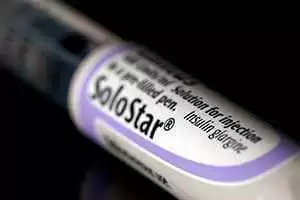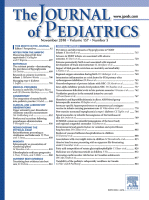.webp.9170376381d733b2b5b9913227426028.webp)
Celiac.com 10/10/2012 - Celiac disease is associated with type 1 diabetes (T1D), but little is known about the connection between celiac disease and diabetic retinopathy (DRP) in patients with T1D.
A research team recently set out to determine whether celiac disease is associated with a higher risk of diabetic retinopathy (DRP) in patients with T1D.
Celiac.com Sponsor (A12):
 The researchers included Kaziwe Mollazadegan, MD; Maria Kugelberg, MD, PHD; Scott M. Montgomery, PHD; David S. Sanders, MB, CHB, FRCP, MD, FACG; Johnny Ludvigsson; MD, PHD; and Jonas F. Ludvigsson, MD, PHD.
The researchers included Kaziwe Mollazadegan, MD; Maria Kugelberg, MD, PHD; Scott M. Montgomery, PHD; David S. Sanders, MB, CHB, FRCP, MD, FACG; Johnny Ludvigsson; MD, PHD; and Jonas F. Ludvigsson, MD, PHD.
They are affiliated with the Pediatric Clinic, and the Department of Clinical and Experimental Medicine in the Division of Pediatrics at Linköping University in Linköping, Sweden, with St. Erik Eye Hospital, and the Clinical Epidemiology Unit, Department of Medicine, Karolinska Institutet, Stockholm, Sweden; the Department of Pediatrics, and the Clinical Research Centre at Örebro University Hospital in Örebro, Sweden, Gastroenterology and Liver Unit, Royal Hallamshire Hospital and University of Sheffield, Sheffield, U.K.
Their study shows that longstanding celiac disease is associated with an increased risk of diabetic retinopathy in patients with type 1 diabetes.
The team conducted a population-based cohort study, in which they used the Swedish National Patient Register to identify 41,566 patients diagnosed with diabetes from 1964 to 2009, and who were 30 years of age or younger at the time of diagnosis.
The team defined celiac disease as the presence of villous atrophy (Marsh stage 3) according to small intestinal biopsies performed between 1969 and 2008, with biopsy reports obtained from Sweden’s 28 pathology departments.
During follow-up, the team found 947 T1D patients with celiac disease. They used Cox regression analysis with celiac disease as a time-dependent covariate to estimate adjusted hazard ratios (aHRs) for DRP in patients with T1D and celiac disease, and to compare them with patients with T1D but no celiac disease.
The results showed that the longer the patients had celiac disease, the higher their risk of DRP.
Once the team adjusted the results by time from celiac disease diagnosis, people with T1D and celiac disease showed a lower risk of DRP in the first 5 years after celiac disease diagnosis (aHR 0.57 [95% CI 0.36–0.91]), followed by a neutral risk in years 5 to
Between 10 and 15 years after diagnosis, patients with coexisting celiac disease showed a risk of 2.83 for DRP [95% CI 1.95–4.11. More than 15 years after follow-up, that higher risk rate went up to 3.01 [1.43–6.32]).
So, having celiac disease for more than 10 years is a risk factor for the development of DRP in patients with T1D. Therefore, the researchers note, physicians should conduct intense DRP monitoring in patients with long-standing celiac disease and T1D.
Source:
- Open Original Shared Link






Recommended Comments
There are no comments to display.